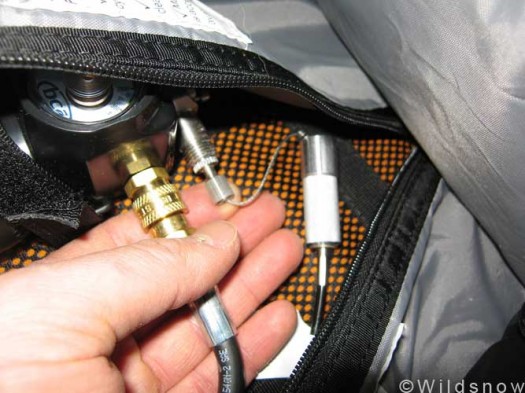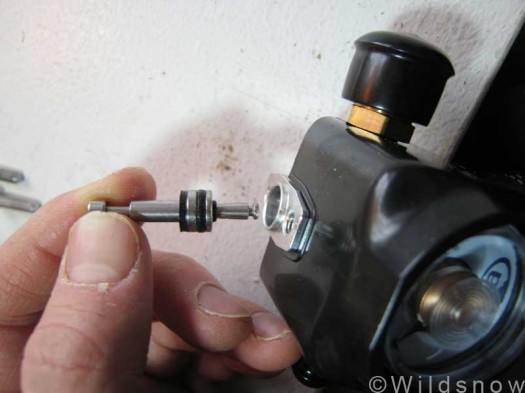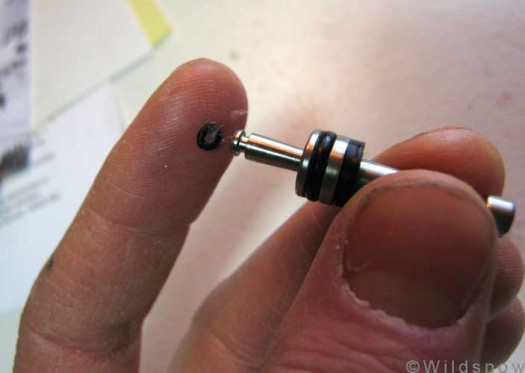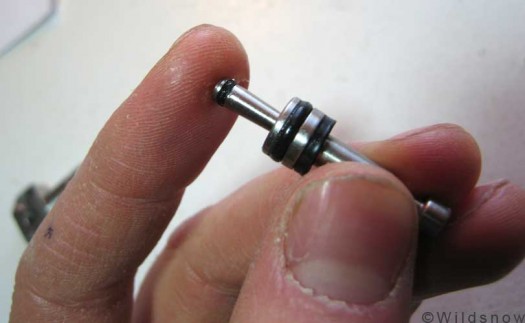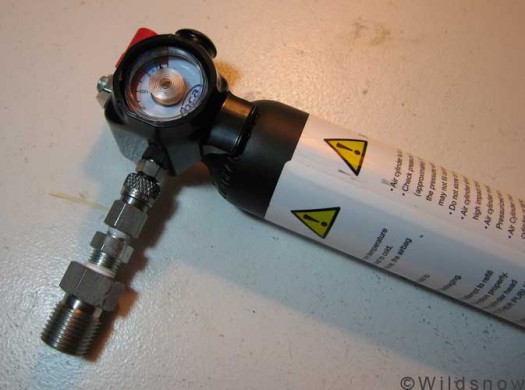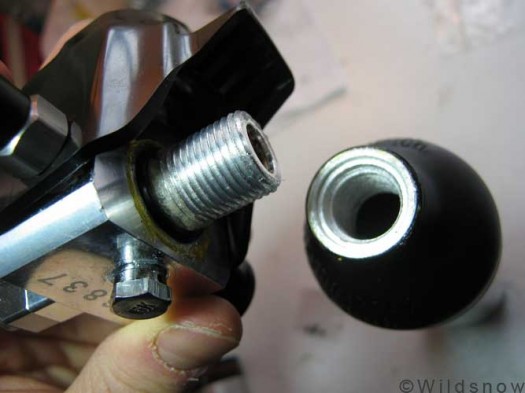BCA avalanche airbag backpacks have a user refillable air cylinder. This feature allows you to refill your spent cylinder and get back on the slopes without delay or shipping costs. (If you don’t want to refill it yourself, you can always exchange it for a full one through the mail.) While this process may appear complex, once you’re used to it and have a good place to get the compressed air, you can do a refill quite easily and in a matter of minutes. Note that early versions of BCA’s system were hard to trigger, but this has been fixed. All improved “easy pull cylinders” are marked as such or have a gray colored cylinder head (not black). For our reports on the refill process for other brands, please see our index of Avalanche Airbag blog posts.
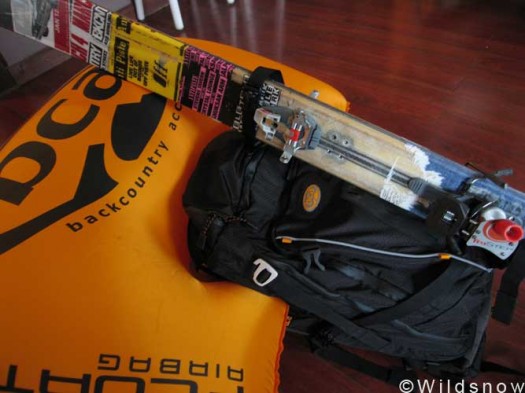
Here, the BCA Float 30 backpack has been inflated. In order to use it again, you will need to deflate and repack the airbag, and refill the cylinder.
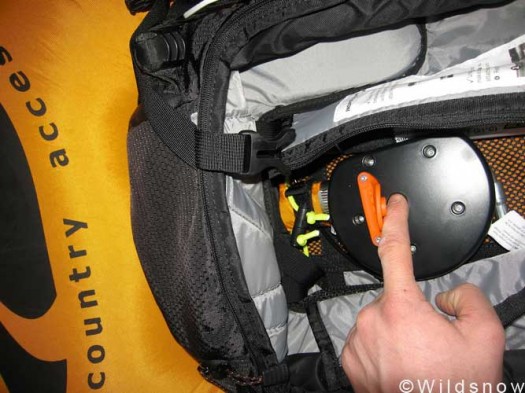
The valve is accessed inside the pack. Lift up the orange flap and push the button in- out comes the air.

Compress all the air out, fold the bag along the existing creases and then fold accoridian style into the pack.
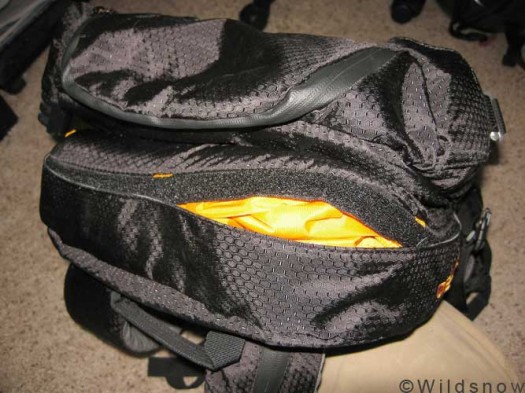
It's a tight fit and you may need to distribute the bag evenly to get the velcro to completely close. New packs use a zippered closure which is easier.
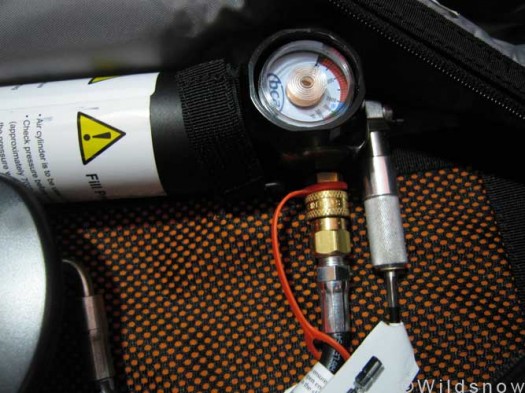
Now, you can disconnect the cylinder. Start by unscrewing the trigger cover, that's the one on the right.
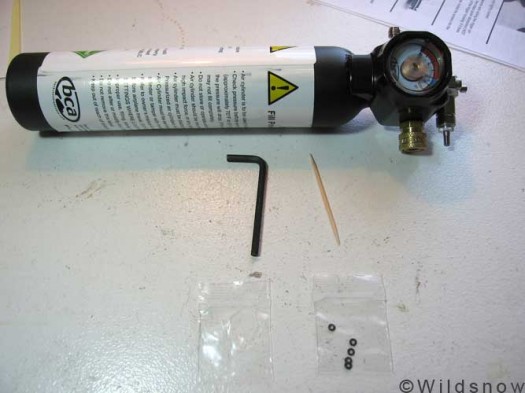
With the cylinder removed and disconnected from the bag, grab your refill kit. It should include a hex wrench, toothpick, grease, and 5 o-rings. Bravo to BCA for including the kit for free with your pack.
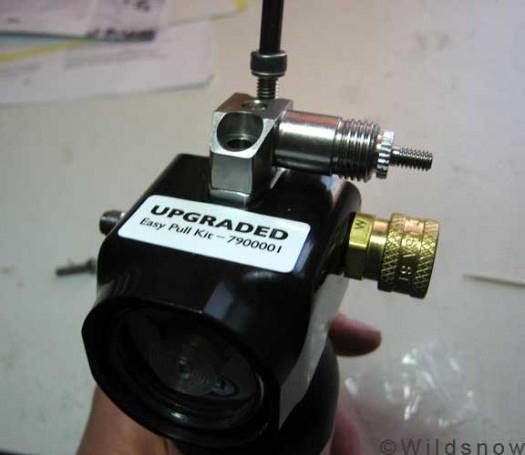
Unscrew the two hex screws, separating the trigger housing from the cylinder head. Note the easy pull kit sticker, which is on all new cylinders. If yours doesn't have this, call BCA to upgrade.
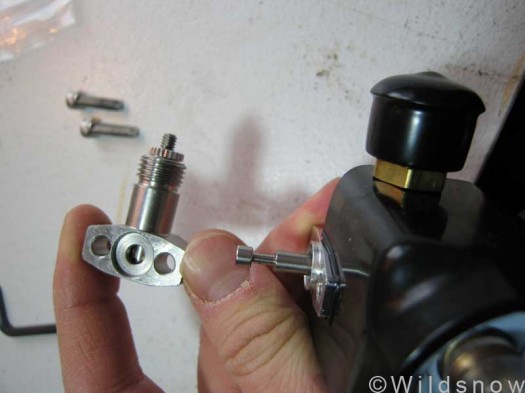
With both screws removed, you must pull on the trigger pin in order to pull the housing up and off the cylinder head.
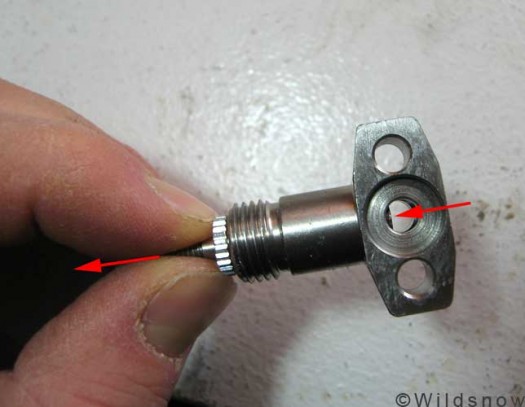
This picture shows why the trigger pin must be pulled before the housing will lift off. It sticks into the slot on the valve stem.
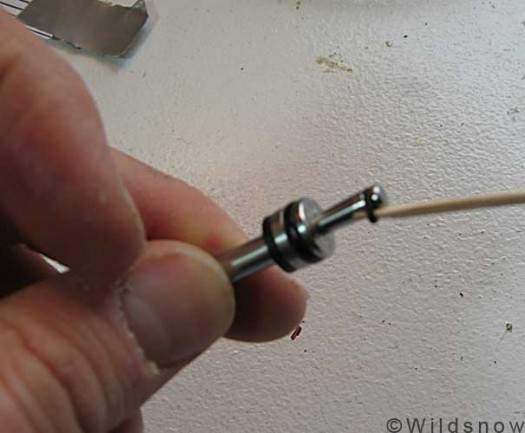
Remove and replace the little o-ring with the included toothpick. Check the big o-ring for damage, but leave it on. Wipe off the old grease with a rag, being careful to not scratch anything.

Re-install the valve stem and trigger housing, making sure that the housing points in the right direction. The trigger should face the same direction as the air hose coupler, not the fill nipple. Don't over torque the screws, they don't need to be very tight.
You’re done with the assembly part, now the cylinder is ready to be filled. This can be done at one of four places: some licensed retailers, a paintball shop, a dive shop, or a fire station. You cannot do this at the gas station or on a construction compressor as you need 2700 psi of air! The head comes with a paintball fill fitting, so that’s the easiest route, but beware that paintball shops may not be good about keeping their air dry, which is very important. Dive shops require a paintball to SCUBA adaptor, have dry air, and should be very willing to fill your cylinder in the slow winter months if they are open. Fire stations require a paintball to SCBA adaptor and also have dry air. My experience is limited to fire stations, which is a great option as they should do it for free, every town has one, and they’re often open 24/7. However, it’s a mixed bag as far as how willing they will be to do it. Some stations will even change their minds (Aspen would do it a few years ago, but not anymore), so be sure to be courteous and perhaps consider a donation of some form (although this should be a free community service- you pay taxes right?) to keep them happy. A fifth option could be a ski patrol that uses the packs, but I haven’t tried and am not sure how involved in this they would want to get.
Whoever you have do it, have them fill the cylinder slowly (to avoid overheating) to 2700psi. Let them know that there is a check valve in the cylinder assembly, so when they unhook the adaptor, the air will stay in (I’ve had some confusion with that one). The cylinder will be hot, so you must cool the cylinder to room temp and then top it off. The reason for this is that gas expands when it is hot, so when the cylinder cools, the volume will drop. The cylinder gauge must read 2700 psi at room temperature. A water or snow bath will work, or just wait a couple hours. If you over fill the cylinder, there is no bleed valve, so to release some air you’ll have to release all of it.

My favorite method to cool the cylinder is to fill a Nalgene half full with water. Bring it with you to the filling place and it should get it cool within a few minutes.
Bonus: For air travel, you unfortunately cannot bring a filled cylinder on board. You must remove the cylinder head from the cylinder body so that security can look inside. Make sure to take these apart before you get to the airport, and keep them that way until you reach your destination. Goes without saying that this should only be done with an empty cylinder! The head should screw off easily by hand, if you encounter resistance, a wrench may be necessary. When you reach your destination, screw the head back on by hand, not too tight. You will then have to fill it, so be sure to have an idea on how you will do this wherever you end up.
Nick Thompson brings an incredible amount of skiing and mountaineering experience to WildSnow.com. Nick grew up climbing and skiing in the mecca of Telluride. He has a super attitude and incredible drive, making Nick one of those people who is terrific to be in the mountains with.

